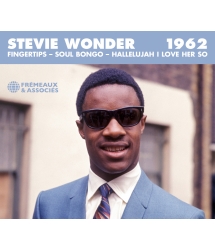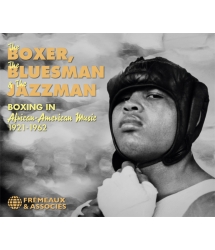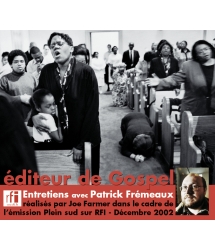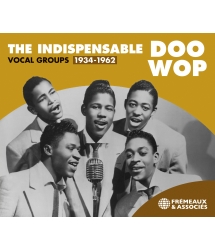- Our Catalog
- Philosophy
- Philosophers of the 20th century and today
- History of Philosophy (PUF)
- Counter-History and Brief Encyclopedia by Michel Onfray
- The philosophical work explained by Luc Ferry
- Ancient thought
- Thinkers of yesterday as seen by the philosophers of today
- Historical philosophical texts interpreted by great actors
- History
- Books (in French)
- Social science
- Historical words
- Audiobooks & Literature
- Our Catalog
- Jazz
- Blues
- Rock - Country - Cajun
- French song
- World music
- Africa
- France
- Québec / Canada
- Hawaï
- West Indies
- Caribbean
- Cuba & Afro-cubain
- Mexico
- South America
- Tango
- Brazil
- Tzigane / Gypsy
- Fado / Portugal
- Flamenco / Spain
- Yiddish / Israel
- China
- Tibet / Nepal
- Asia
- Indian Ocean / Madagascar
- Japan
- Indonesia
- Oceania
- India
- Bangladesh
- USSR / Communist songs
- World music / Miscellaneous
- Classical music
- Composers - Movie Soundtracks
- Sounds of nature
- Our Catalog
- Youth
- Philosophy
- News
- How to order ?
- Receive the catalog
- Manifesto
- Dictionnary











- Our Catalog
- Philosophy
- Philosophers of the 20th century and today
- History of Philosophy (PUF)
- Counter-History and Brief Encyclopedia by Michel Onfray
- The philosophical work explained by Luc Ferry
- Ancient thought
- Thinkers of yesterday as seen by the philosophers of today
- Historical philosophical texts interpreted by great actors
- History
- Books (in French)
- Social science
- Historical words
- Audiobooks & Literature
- Our Catalog
- Jazz
- Blues
- Rock - Country - Cajun
- French song
- World music
- Africa
- France
- Québec / Canada
- Hawaï
- West Indies
- Caribbean
- Cuba & Afro-cubain
- Mexico
- South America
- Tango
- Brazil
- Tzigane / Gypsy
- Fado / Portugal
- Flamenco / Spain
- Yiddish / Israel
- China
- Tibet / Nepal
- Asia
- Indian Ocean / Madagascar
- Japan
- Indonesia
- Oceania
- India
- Bangladesh
- USSR / Communist songs
- World music / Miscellaneous
- Classical music
- Composers - Movie Soundtracks
- Sounds of nature
- Our Catalog
- Youth
- Philosophy
- News
- How to order ?
- Receive the catalog
- Manifesto
- Dictionnary
1959-1962
THE SHADOWS - BRENDA LEE
Ref.: FA5826
Artistic Direction : Michel Brillié et Gilles Pétard
Label : Frémeaux & Associés
Total duration of the pack : 1 hours 7 minutes
Nbre. CD : 1
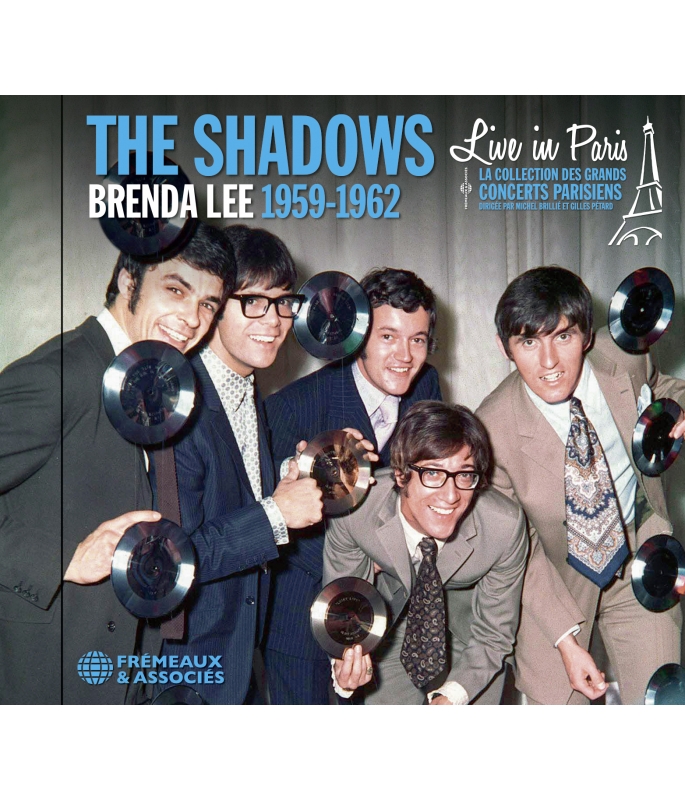
1959-1962
The Shadows: British rock pioneers and one of the greatest instrumental groups of all time. Their smash hit “Apache” was revolutionary rock ’n’ roll when it came out in 1960, and today it’s considered the first foundation of the Britpop movement that conquered the world in the Sixties. Brenda Lee was something else, a child-star born in Atlanta, USA, and one of the first pop singers to reach world fame. The raw power in her voice earned her the nickname “Little Miss Dynamite”, and she could mix country music and r&b like nobody else. This album brings together recordings from 1959 to 1962, and puts listeners right at the heart of a new phenomenon that was about to hit both sides of the Atlantic: pop rock.
Patrick FRÉMEAUX
The Live in Paris collection by Michel Brillié allows listeners to hear previously-unreleased recordings (made at concerts and private- or radio-sessions) by the great 20th stars in jazz, rock & roll and song. These “live” takes, and the artists’ rapport with their audiences, gives these performances an additional soul and sensibility in counterpoint to the rigorous demands of studio recordings. Particular care was taken when restoring the sound of these tapes in order to meet CD standards while preserving the original colours of the period.
Patrick FRÉMEAUX & Gilles PÉTARD
THE SHADOWS : SHAZAM • SHADOOGIE • STRANGER ON THE SHORE • THE FRIGHTENED CITY • DO YOU WANT TO DANCE • MAN OF MYSTERY • NIVRAM • KON TIKI • MIDNIGHT • APACHE • GUITAR BOOGIE • JET BLACK • FBI • DRIFTIN’.
BRENDA LEE : DYNAMITE • LOVER COME BACK TO ME • DUM DUM • JAMBALAYA • I’M SORRY • SWEET NOTHIN’S • KANSAS CITY • WHAT’D I SAY • TUTTI FRUTTI • LET’S JUMP THE BROOMSTICK • SOME OF THESE DAYS • JAMBALAYA.
DIRECTION ARTISTIQUE : GILLES PÉTARD ET MICHEL BRILLIÉ
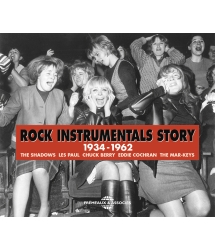
THE SHADOWS • LES PAUL • CHUCK BERRY • EDDIE COCHRAN...
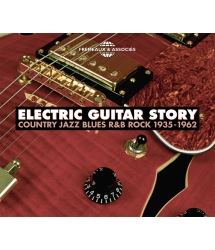
ROCK COUNTRY JAZZ BLUES R&B (1935-1962)
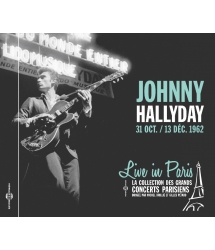
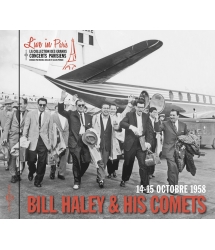
LIVE IN PARIS





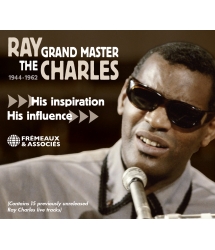
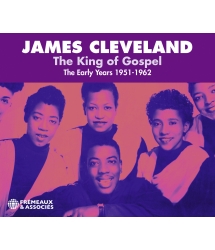
-
PisteTitleMain artistAutorDurationRegistered in
-
1ShazamThe ShadowsDuane Eddy00:02:041962
-
2ShadoogieThe ShadowsJet Harris00:02:581962
-
3Stanger on the shoreThe ShadowsAcker Bilk00:02:561962
-
4The frightened cityThe ShadowsNorrie Paramor00:02:561962
-
5Do you want to danceThe ShadowsBobby Freeman00:01:591962
-
6Man of mysteryThe ShadowsMichael Carr00:02:111962
-
7NivramThe ShadowsJet Harris00:03:191962
-
8Kon TikiThe ShadowsMichael Carr00:02:181962
-
9MidnightThe ShadowsHank Marvin00:03:171962
-
10ApacheThe ShadowsJerry Lordan00:03:011962
-
11Guitar boogieThe ShadowsTommy Emmanuel00:02:521961
-
12Jet blackThe ShadowsJet Harris00:02:151961
-
13FBIThe ShadowsPeter Gormley00:02:311961
-
14Driftin'The ShadowsHank Marvin00:02:501961
-
15DynamiteBrenda LeeMort Garson00:01:181962
-
16Lover come back to meBrenda LeeOscar Hammerstein II00:02:411962
-
17Dum DumBrenda LeeJackie Deshannon00:02:321962
-
18JambalayaBrenda LeeHank Williams00:02:121962
-
19I'm sorryBrenda LeeDub Albritton00:02:521962
-
20Sweet Nothin'sBrenda LeeKirby Stone Four00:02:341962
-
21Kansas CityBrenda LeeJerry Leiber00:02:121962
-
22What'd I sayBrenda LeeRay Charles00:03:011962
-
23Tutti FruttiBrenda LeeDorothy LaBostrie00:02:281962
-
24Let's Jump the BroomstickBrenda LeeCharles Robins00:02:281962
-
25Some of these daysBrenda LeeShelton Brooks00:02:411959
-
26JambalayaBrenda LeeHank Williams00:02:371959
THE SHADOWS + BRENDA LEE LIVE IN PARIS 1959-1962
By Michel Brillié
A “Fiesta Red” Axe
It was 1959, somewhere backstage at the Royal Albert Hall, London’s historic performance hall. Five young boys had just taken part in the multi-star concert “the 1958/1959 Annual Poll Winners”. The event was organized by the dominant musical newspaper of the time, the New Musical Express. Each year, readers voted for their favorite artists. The winners of ‘59: Petula Clark, Chris Barber, a New Orleans jazz trombonist, Lonnie Donegan, the king of Skiffle, and the five partners: Cliff Richard and the Drifters, the future Shadows.
“Look, Hank,” said the baby-faced singer, “I want to buy you a really decent guitar…What do you reckon that is?” Cliff turned to Hank Marvin, his lead guitarist, a lanky guy with cheap National Health glasses. Bruce Welch, the other founding member of the group, said once that “he looked even more like Buddy Holly than Buddy Holly did.” Hank checked the guitar he played at that time, a rundown Japanese copy. “I told Cliff, well... Buddy Holly uses a Fender, and we loved the sound of James Burton’s guitar, we’re pretty sure he uses a Fender…”
Hank tells the rest to Dick Dale, sitting in Dale’s guitar store, adorned with dozens of legendary instruments on its walls.
“Cliff got his management to get us a brochure... We looked at the brochure, and the most expensive guitar is this Strat, a red Strat, with bird’s eye maple neck, gold plated hardware… and we thought: it’s gotta be the one…”
This mythical axe with its “Fiesta Red” body had an additional great thing: the “Whammy Bar”, a device that essentially provides a pitch variation of your guitar by altering the tension of every string at once.
“I’d always wanted to try make a guitar sound like a voice,” adds Marvin.
Stepping out of the shadow
The Strat well wedged in its red-velvet-lined case, the Drifters, their then stage name, hit the road with Cliff Richard, who had become the major representative of British Style Rock n’ Roll. Norrie Paramor was their manager at EMI Records. After a couple of singles sung by The Drifters, he agreed to let the group record “Jet Black”, an instrumental composed by Jet Harris, their bass guitar player. Some months later that year of ’59, a major problem appeared in the form of a lawsuit from the producer of an American R’n’B group, already named The Drifters… They, the “English Drifters”, had to change their name. And for a good reason, since the “made in USA” Drifters had been known since 1956… An urgent meeting was called among the boys at the Six Bells Pub in London. Hank and Jet were really puzzled. What should they call themselves? The Four Jets? The This, The That? Then Jet Harris said: “We’re always in the shadows behind Cliff with the spotlight… Connect… That’s a great name!”
British Surf Guitar
1960. Touring with Cliff had become permanent. In April/May, Dover, Portsmouth, Newcastle, Manchester, Liverpool…As usual, there was a first part of the show with supporting acts: The Four Jones Boys, Kathy Kirby, the Billy Woods Five, and an unassuming singer-songwriter of 25, Jerry Lordan. One night, the Shadows and Lordan were talking shop before the show’s opening. Hank Marvin: “He said, are you guys going to do any more recordings on your own, as the Shadows? We said yes, and he got this ukulele out that he fortuitously had with him, and just started then, ding ding ding ding, dang dang,dang dang dang, dang dang dunk… And we thought, Jet and I, this is different… I’m thinking, it’s almost like a movie, where you see the Apaches galloping along in Arizona somewhere.”
The Shadows megahit climbed up the charts and reached the number one spot – at the same time knocking off the throne “Please Don’t Tease” the latest single from the boss, Cliff Richard. “Apache”, the epitome in British Surf Guitar for many guitar players, remained at the number one spot for five weeks, selling over a million copies.
The tune of “Apache” has triggered many vocations: “It’s very hard to imagine the thrill and excitement of listening to a tune like that, because it’s a simple guitar tune.” David Gilmour of Pink Floyd recalls the initial shock.”It struck a chord in me really, I liked it, I wanted to learn how to play it.”
Pete Townshend, legendary leader of the Who, is even more personal: “The first song I ever memorized was “Apache”, it was as pivotal for me as my first orgasm, more pivotal than Elvis Presley or my first drink…The thing about Apache is, it was us! It was the British, it was our music. It woke me up.”
Following “Apache”, there was a steady stream of recordings and hits: “Man of Mystery”, “F.B.I.”, “The Frightened City”, “Kon-Tiki”… “Simple melodies, beautifully played,” as Gilmour put it, that were liked all over the world, in France, in Europe, Asia or Australia. They were so popular that at each time, Hank Marvin wondered: What if this was the last one?
Blown off the stage
With their identifiable “clean and metallic” sound, and their stage choreography, little kicks and swings round and back, the group dominated the British music scene all through the first half of the sixties. But, little by little, their popularity waned. The wheel spinned. “Pop music is a rapidly changing thing,” commented David Gilmour, “I guess they couldn’t really work out how to change with the times.” Bruce Welch:”We could never have been part of the British invasion of America in ’64… By then, we looked like Frank Sinatra and Dean Martin… Four guys in tuxedos.”
The British invasion had indeed surged. And in a rather paradoxical way, the Shadows had played a part in it. Paul Mc Cartney said that Cliff Richard and the Shadows had it sewn up in Britain, and so they left and went to Hamburg.
Cliff Richard summed it up: “We drove them out... Now that’s probably the best thing that happened to them. Whatever happened in Hamburg, they came back and then blew us all off the stage.”
The Beatles had arrived.
Brenda and John
That fall of 1962, Little Brenda Tarpley had somehow foreseen the same cultural upheaval. Brenda Lee, her stage name, had found herself the top billing artist of the Star Club Show in Hamburg. The “Lads from Liverpool” were the opening act for the show. She was at first taken aback by the Fab Four to be, even if she declared later that she liked them a lot.
“I hung out with John,” She recalled in a magazine interview. After watching their set, she approached one of them after the show. “I’ve been meaning to ask you,” Lee asked one of the young men, “where do you get those songs?”
“Oh,” replied John Lennon. “We write them.”
Together they went for walks on Hamburg’s harbor. “He was extremely intelligent, very acerbic with his jokes, just a gentle person. When I found out that they later said they were fans of my music, I was just floored.”
A midget for Paris?
In April 1962, several months before her Star Club performance, the young seventeen-year-old singer had stopped in Paris. It was again, for a second time, at the Olympia Theater. Eddie Constantine, the movie playboy of the time for France, had greeted her at Orly Airport, along with Olympia manager Bruno Coquatrix. This time Brenda performed at the French venue as a true international singing star. It was a kind of revenge for the chubby teenager. On her first visit in Paris, she had been looked down as a kind of circus freak: how on earth could a tiny five-foot girl have such a potent, soulful voice? Legend has it that her manager told the media that she in fact was a 35 year-old midget. He then admitted her real age. At any case, she indeed was on the bill for Gilbert Bécaud’s show starting February 19, 1959. “Little Miss Dynamite” was introduced in the program booklet:
Brenda Lee is not a child prodigy: she sings because she enjoys it. She is a singing star, but a star with hobbies such as ice-skating, reading comics and blowing bubblegum… And, while millions of TV viewers are surprised by the voice of this kid with big brown eyes, curly hair and innocent look, Brenda on her part is mostly concerned by her maths and writing lessons.
An ordinary star
Brenda Lee remained a normal person throughout her career: “The thing about me is I’ve always led a normal life,” she says in Rollingstone. “I’m probably one of the few artists that did.” She was a star child, and she was also well taken care of as early as this ’59 international tour. Her mother chaperoned her, as well as a teacher from the American School in Paris. Gilbert Bécaud took her also under his wing and welcomed her in his posh mansion in Le Chesnay, near Versailles. Of course, the French paparazzi had a field day, and the two artists made the headlines with shots of the two in his private park: “Miss Dynamite plays hide and seek with Mister 100.000 Volts” (Bécaud’s nickname). Everything was done to tone down the “little monster” label that had been stuck on Brenda.
There is no setlist for Brenda Lee’s 1959 performance at the Olympia; however, if we can judge by the unreleased songs the Live in Paris team has unearthed, she clearly mixed her Rock ‘n’ Roll hits together with mellower standards: “Rock the Bop”, “Sweet Nuthin’s”, “Dynamite”, with “Lover Come back to Me”, or “Some of These Days”, a repertoire more compatible with Gilbert Bécaud’s audience, or, for that matter, with the French musicians of Raymond Bernard’s house band…
Parisian shopping binge
And so Brenda came back in the French capital three years later. She was enthusiastically welcomed. It’s “The New Brenda Lee” wrote the Paris newspapers “The Little Monster has become a charming young woman.” Bruno Coquatrix made her the star of a show full of promises, Concentration Rock. The openings acts were the popular French groups of that period, Les Fantômes, Les Champions, along with an Italian rock and roller, Little Tony. There again was she watched by her mother Grace and, apparently, by David Glyde, a sax player from Sound Incorporated, her backing band. Her mom was also present when Brenda paid a visit to Jacques Estérel, the trendy couturier in 1962, then went to a famous jeweller’s store on the Place de l’Opéra to buy a ring. Then the singer hopped in a taxi to be interviewed on a French popular radio show. Brenda’s picture in the studio became the cover for her French E.P. with “All Alone Am I”.
The greatest of them all
She constantly toured England, first with Gene Vincent then as the true star of the show.
Listening to Lee’s voice, a mix of her rural country-blues and gospel roots from her small-town in Georgia, with the elegant crooning of Frank Sinatra or Tony Bennett – the young Teddy Boys must have been charmed by this small girl blending various sources of American pop music.
“When I saw her perform, I was just stunned. I don’t think I had ever heard anything like it,” Elton John recalled. He was a teenager when he first saw Lee play in England. “Brenda Lee is in the top three female rock & roll singers of all time: her, Janis Joplin and Tina Turner.” John Lennon, on his part, is said to have called Lee “the greatest rock & roll voice of them all.”
A truly amazing voice for a still normal woman, her size aside… “Brenda is one of the greatest entertainers ever,” says Dolly Parton, the country music legend and Brenda’s close friend. “But I think I like her mostly because she’s the only person I know that I’m taller than.” Today she leads the regular life of a woman with kids, grandkids, and with Ronnie, her husband since 1963. And an old dog.
Just a fan
Brenda also has normal hobbies. In the living-room of her Nashville house, you can admire her collection of autographs. She’s very proud of it. Judy Garland, the Beatles, Fats Domino, Jerry Lee Lewis. Brenda admits: “I’m an autograph hound.”
Well some other folks collect… guitars, for instance. By the way, whatever happened to the famous red Fender Stratocaster that was a marker for the Shadows? “In fact, it belonged to Cliff,” says Hank Marvin in the 2020 BBC4 documentary The Shadows at Sixty. The camera turns to an almost octogenarian Bruce Welch. He confesses with a malicious smile: “I still got it. I stole it from him…”
Michel Brillié
© Frémeaux & Associés 2022
1 All artists quotes are from the following documentaries:
BBC4 : The Shadows at Sixty, directed and produced by Satiyesh Manoharajah , 2020. 59 minutes.
https://www.youtube.com/watch?v=wdU5BsKdGCc
Hank Marvin 1958 Strat and Hank himself – With Graham Hoskins (Concept Music, 2016)
https://www.youtube.com/watch?v=5YfBs6rigys
Stratocaster Legend, produced by David Rixon, (Grindelwald Productions, 2004.) 77 minutes
http://www.grindelwald.co.uk/html2/strat.htm
2 All artists quotes are from the following sources:
The Life and Times of Brenda Lee, Melanie Blythe, The Nashville Network, /Greystone Prod, 2002. 42 minutes
https://www.youtube.com/watch?v=fcUbb-0WT_0
Inside the Life of Brenda Lee, the Pop Heroine Next Door, by Jonathan Bernstein. Rollingstone Magazine, 2018
https://www.rollingstone.com/music/music-features/inside-the-life-of-brenda-lee-the-pop-heroine-next-door-205175/
French newspapers articles :
http://www.amourdurocknroll.fr/pages/brenda_lee_24_heures_a_paris_samedi_21_avril_1962.html
THE SHADOWS
1 Shazam (Duane Eddy / Lee Hazlewood) 2’04
2 Shadoogie (Jet Harris / Hank Marvin / Tony Meehan / Bruce Welch) 2’58
3 Stranger on the Shore (Acker Bilk / Robert Mellin) 2’56
4 The Frightened City (Norrie Paramor) 2’56
5 Do You Want to Dance (Bobby Freeman) 1’59
6 Man of Mystery (Michael Carr) 2’11
7 Nivram (Jet Harris / Hank Marvin / Bruce Welch) 3’19
8 Kon Tiki (Michael Carr) 2’18
9 Midnight (Hank Marvin / Bruce Welch) 3’17
10 Apache (Jerry Lordan) 3’01
11 Guitar Boogie (Tommy Emmanuel / Arthur Smith) 2’52
12 Jet Black (Jet Harris) 2’15
13 FBI (Peter Gormley) 2’31
14 Driftin’ (Hank Marvin) 2’50
BRENDA LEE
15 Dynamite (Mort Garson / Tom Glazer) 1’18
16 Lover Come Back to Me (Oscar Hammerstein II - Sigmund Romberg) 2’41
17 Dum Dum (Jackie DeShannon - Sharon Sheely) 2’32
18 Jambalaya (Hank Williiams) 2’12
19 I’m Sorry (Dub Albritton - Ronnie Self) 2’52
20 Sweet Nothin’s (Kirby Stone Four - Ronnie Self) 2’34
21 Kansas City (Jerry Leiber - Mike Stoller) 2’12
22 What’d I Say (Ray Charles) 3’01
23 Tutti Frutti (Dorothy LaBostrie - Richard Penniman) 2’28
24 Let’s Jump the Broomstick (Charles Robins) 2’28
25 Some of These Days (Shelton Brooks) 2’41
26 Jambalaya (Hank Williiams) 2’37
Total 1:07:03
Recorded by:
Europe N°1 Technical Staff
Recording Dates:
Tracks 1 to 10: September 15, 1962
Tracks 11 to 14: December 11 or 12, 1961
Tracks 15 to 24: April 21,1962
Tracks 25 & 26: February 24, 1959
Recorded by Europe N°1 Technical Staff
Recording Place
Olympia Theater, Paris, France
Produced by: Norrie Paramor, Bruno Coquatrix & Lucien Morisse (Tracks 1 to 14 )
Produced by: Dub Allbritten, Bruno Coquatrix & Lucien Morisse (Tracks 15 to 26)
Personnel
Tracks 1 to 10:
Hank Marvin Lead Guitar
Bruce Welch Rhythm Guitar
Brian “Licorice” Locking Bass Guitar, Harmonica on track 3
Brian Bennett Drums
Tracks 11 to 14:
Hank Marvin Lead Guitar
Bruce Welch Rhythm Guitar
Jet Harris Bass Guitar
Brian Bennett Drums
Tracks 15 to 24:
Brenda Lee Vocals
Alan Holmes flute/saxophone
Griff West saxophone
John St. John guitar
Barrie Cameron keyboards
Wes Hunter bass guitar
Tony Newman drums
Tracks 25 & 26:
Olympia House Band
Director: Raymond Bernard
La collection Live in Paris :
Collection créée par Gilles Pétard pour Body & Soul et licenciée à Frémeaux & Associés.
Direction artistique et discographie : Michel Brillié, Gilles Pétard.
Coordination : Augustin Bondoux.
Conception : Patrick Frémeaux, Claude Colombini.
Fabrication et distribution : Frémeaux & Associés.
